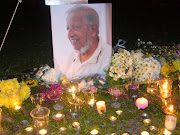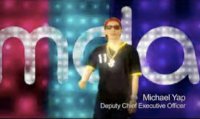‘Reclamation” is a very familiar concept to Singaporeans. The sea is continually being ‘reclaimed’ and the coastline smoothed to allow for new housing and industrial estates. The term ‘reclamation’ also means retrieving something that has been lost. The chapters in this book contribute towards both kinds of reclamation. One the one hand, we intend to construct new, refreshing and sometimes challenging histories of Singapore. On the other hand, we want to reclaim for future generations the memory of a period extending from late colonial days into the 1960s when Singapore was host to a dynamic and idealistic culture of political contestation and pluralism.
When we say these histories are ‘new’, we simply mean that they have not been written into the history of Singapore as it is usually told. They are ‘new’ histories based on old memories and archives that have, for the most part, been neglected or forgotten – and so are ‘paths’ that have not been taken. The result, we hope, is an upgraded conception of Singaporean history – not one that replaces the standard ‘Singapore Story’ sponsored by the regime, but one that complements it, allowing the histories of those unrecognised contributors to the construction of Singapore to be told alongside those who have claimed sole responsibility.
Most of the papers in this book were first presented in 2005 at an international symposium hosted in Singapore by the National University of Singapore’s Asia Research Institute (ARI) under the direction of Professor Anthony Reid and opened by Mrs Jean Marshall, the widow of Singapore’s first Chief Minister, David Marshall.
The Symposium
The symposium was planned as an academic conference for about three dozen scholars who could sit around a table and discuss each others’ research papers. When registrations from the public passed the 200 mark we realised that it was going to be much more than this. For many locals it offered a rare opportunity to open windows into their society’s past that were usually shuttered – for them the ‘paths not taken’ were not primarily histories to be upgraded, but societal memories to be reclaimed, and – sometimes – reputations to be redeemed. One member of the audience, a Singapore lawyer and mother of teenagers, bemoaned the fact that her children had no inkling of the events, situations and personalities that we were discussing. Their Singapore history lessons at school were completely silent on the topics we were covering. It was as if they had never existed.
This book has thus become an archaeological experience. We found ourselves forced to clear away the overburden of the ‘Singapore Story’ in order to recall the worlds of the past that existed now only in myth and in the memories of the few who could not forget. Except for these and those few historians who had bothered to dip into the archives and consult the survivors, many of the events of the 1940s, 1950s and 1960s, even the 1970s and 1980s, had become terra incognita. So successful has the current regime been in obliterating the unresolved past, that the ‘Singapore Story’ of Lee Kuan Yew and the People’s Action Party (PAP) was all that remained visible. There was only the account of their struggle for ‘survival’ against colonialism, communism, large and unpredictable neighbours, and uncertain economic circumstances. This was followed by the triumphal story of rapid economic development. In this history, even the contributions of Lee’s colleagues tended to be swamped by the Lee Kuan Yew story, thus narrowing the story even further.
Although elements of these alternate histories still existed in some accounts, most scholars treated these perspectives in a rather negative fashion. The pre-PAP age was portrayed as a chaotic and uncertain time before the events of ‘real’ history took place. And yet, for those who know the era, it was one of dynamism, great political movements, and high aspirations. This was true, we argue here, not only for the rest of Asia, but also for Singapore itself.
The age was one of revolution and hope, a hope that, many will argue, has yet to be fully realised, even today. In remarks addressed to the symposium, Professor Wang Gungwu, who not only lived through most of the events covered in this book, but was also an active participant, portrayed some of the sentiments being expressed as a kind of ‘nostalgia’ for a bygone era and unachieved dreams. Professor Chua Beng Huat suggested that much of the interest in the panels was from Singaporeans who ‘love to hear others tell them how bad they had it’. Perhaps parts of both are true, but whatever the case, it is clear that the presentations touched a nerve that many felt was long in need of stimulating. It is in that spirit that we offer these papers.
The book is the final output of a research project funded in its pilot phase by the Queensland University of Technology (QUT) and the Australian Technological Network of Universities in 2001, and later by the Australian Research Council (ARC). The project’s founders, Carl A. Trocki and Michael D. Barr, were both based in QUT at the beginning of the project, but it soon became a multi-institutional project as Barr moved to the University of Queensland and then Flinders University, and Yao Souchou and Lily Rahim of Sydney University joined. By this stage it had also become an international project, as several colleagues from the National University of Singapore – notably Huang Jianli, Tim Barnard and Kevin Tan – came on board. The international status of the project was cemented when ARI agreed to host the project’s symposium in Singapore and Professor Chua Beng Huat from ARI joined Trocki and Barr as a symposium co-ordinator.
Our aim was to recast Singapore’s post-war history through accounts of the civil and political movements that operated outside the parameters of imagination created by the ruling PAP. It was largely intended to present a ‘not-the-PAP’ version of Singapore’s recent past and to focus on the positive contributions and efforts of those alternative movements. The work was never intended to present an anti-PAP or anti-Lee Kuan Yew approach to the study of Singapore’s social and political order. Unfortunately, that disclaimer has become slightly tendentious, despite our best intentions. In a number of cases, it has been impossible to provide a satisfactory account of a particular movement without noting the manner in which it met its demise or was destroyed. The fact that these paths were not taken was often the result of forceful action by those in power. One does not make an omelette without breaking eggs, and the recent history of Singapore is littered with its share of eggshells.
The Book
The book is divided into four thematic sections. The first two papers, grouped under the heading, ‘Opening New Paths’, introduce the age and the ideas. The second group of papers deals with party politics during the 1950s and 1960s, and the third group focuses on broader social, cultural and popular movements within Singapore between the late 1940s and the mid-1970s. The final section, containing only three papers, discusses the 1980s and 1990s, with some consideration of what sort of civil society activity is currently possible in Singapore.
Chapters
Introduction
Carl A. Trocki and Michael D. Barr
Part 1: Opening New Paths
1. Imperial Subjects, Straits Citizens: Anglophone Asians and the Struggle for Political Rights in Inter-War Singapore – Chua Ai Lin
2. Internationalism and Political Pluralism in Singapore, 1950-1963 – Sunil S. Amrith
Part 2: Party Politics
3. The United Front Strategy of the Malayan Communist Party in Singapore, 1950s-1960s – C. C. Chin
4. Chinese Merchants in Politics: The Democratic Party in the 1955 Legislative Assembly Election – Sikko Visscher
5. Winning and Losing Malay Support: PAP-Malay Community Relations, 1950s and 1960s – Lily Zubaidah Rahim
6. David Marshall and the Struggle for Civil Rights in Singapore – Carl A. Trocki
Part 3: Activists and Popular Movements
7. Malay Cosmopolitan Activism in Post-War Singapore – Timothy P. Barnard and Jan van der Putten
8. Civil Society and the Malay Education Council – E. Kay Gillis
9. All Quiet on Jurong Road: Nanyang University and Radical Vision in Singapore – Yao Souchou
10. The Young Pathfinders: Portrayal of Student Political Activism – Huang Jianli
11. The Left-Wing Trade Unions in Singapore, 1945-1970 – Michael Fernandez and Loh Kah Seng
Part 4: Walking Narrow Paths
12. Singapore’s Catholic Social Activists: Alleged Marxist Conspirators – Michael D. Barr
13. Internalised Boundaries: AWARE’s Place in Singapore’s Emerging Civil Society – Lenore Lyons
14. History Spiked: Hegemony and the Denial of Media Diversity – Cherian George
Last post here
16 years ago














No comments:
Post a Comment